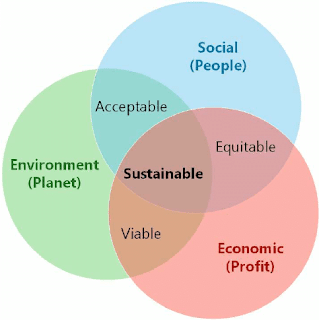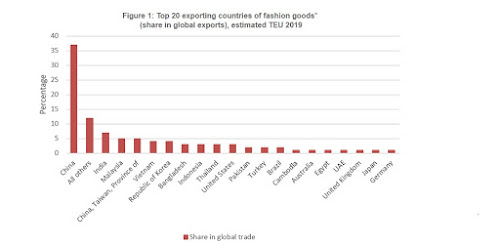Md. Nurun Nabi
Ph.D. fellow, Huazhong University of Science and Technology(HUST), Wuhan, China, and Assistant Professor, Bangladesh University of Textiles
Sustainability of the garments factory is the most significant issue of the present COVID-19 Pandemic situation since the global business environment is changing rapidly with requirements of the need and wants. Now the discussions are changing as the environment of business is changing because of the unpredictability of COVID-19. Sustainability is the most popular word of the present times as well as it was. COVID 19 or Novel coronavirus was firstly traced in the human body on 31, December 2019 in Wuhan, Hubei, China. Now, this novel coronavirus spread all over the world. On behalf of the World Health Organization (WHO) Director-General, Dr Tedros Adhanom Ghebreyesus declared coronavirus disease (COVID-19) Pandemic on March 11. The number of affected countries and regions is increasing day by day. According to the World Health Organization, Institute of Epidemiology, Disease Control and Research, Bangladesh have 232,194 confirmed infections and 3,035 people have died so far from the coronavirus. Many people have recovered from this disease. The total healing number is 130,292.
As the virus spreads within the garment-producing countries, more factories are almost closed down and some will be forced to close, putting potentially millions of more workers out of work. This leaves factories holding the goods, unable to sell them to the customer that ordered them, and in many cases unable to pay the wages of the workers who made them. For many of the 4.1 million workers in Bangladesh’s garment industry can be critical to survival. But more than a million have already been fired as global fashion companies have cancelled or suspended orders in Bangladesh due to the corona-virus crisis, according to a report of Penn State University’s Center for Global Workers’ Rights and the Worker Rights Consortium (WRC). The numbers only look set to rise and don’t count workers in Cambodia, India, Myanmar, Vietnam, and other countries facing similar situations. There are fears that job losses could lead to hunger among the unemployed and their families.
Tazreen and Rana Plaza, the sustainability issues come to our mind. It reminded us that our industry is vulnerable and the factory owner is not as willing to make the factory environmentally sustainable. The RMG industry is thought to be the main catalyst for the booming economy. The foreign buyers are always blaming the environmental and sustainability issues of the factory. Sustainability might be different based on the context of factory issues. There are three sustainability goes with apparel and textiles industry like Social Sustainability, Economic Sustainability, and Environmental Sustainability. Among them, Environmental sustainability is the more burning issues of the globalization and industrialization. Nowadays buyers are focusing on eco-friendly production and productivity of the industry. This COVID situation worsens our industry more. Buyers need a cleaner and improved technology management for a better environment and a better production management system to reduce the impact of environmental hazards.
Social Sustainability is dealing with maintaining and improving the welfare of present and future generations (Chiu, 2003). This kind of sustainability deals with how discrimination of the environment can be removed and creates a harmonious environment and improve quality of life, reduce the social gap, and inequalities among the workers of the textile industry (Enyedi, 2002).This kind of sustainability helps to create an environment-friendly employee and employer relationship. These relationships are termed as a green employee and employer’s relationships. This sustainability creates a significant social infrastructure, the availability of career ability of the workers, accessibility, ability to fulfil the psychological needs, social justice, social sustainability design, social cohesion, social interaction, social networks, social capital, cohesion and harmony between different social groups and social order (Sayyadi Tooranloo, Azadi, & Sayyahpoor, 2017).
Environmental sustainability creates a safe and nice environment and seeks to reduce environmental impacts and to restore environmental damage. To enhance sustainable development requires solving environmental problems. Organizations should consider a set of procedures and policies for systematic management and continual improvement of environmental performance. Sustainability is related to environmental issues. Our textile industries should consider environmental issues as well as other compliance issues. Sustainable industries are the long-term assets of the booming economy of the country. For the sustainable development of the textile industry, green employee relations are very important. Green employee relations help to create an environment-friendly production system to produce environment-friendly productions.
Economic stability is achieved by saving valuable resources necessary for future generations (i.e. implementation of the principle of fair and equal distribution between generations). This approach is very evident in the literature of sustainable development (Munasinghe, 1993) and, it is based on utility theory and economic efficiency, and can be applied in the optimal use of scarce resources and given that economic stability is relevant to a reduction in expenses, and economic management can be achieved by better management of resources and process efficiency, the following factors can be considered for improving better management and the competitive advantage of human resources(Cuccia, 2015).
Sustainable Production is a manufacturing process which converts products with such processes that are not polluting Environment, Produce environment-friendly product, conserve energy and resources, develop environment-friendly employer and employees behaviours’, economically strong and sound, and safe for employees and suppliers, and customers and consumers. In Bangladesh, there are many green top factories like Envoy textiles, Remmy holdings, and Plummy Fashion has taken our factories’ height. These green factories have less carbon emission, higher production, and save more gas, electricity, and water compared to other factories. More than 100 green factories are under construction. BGMEA president said, “Environment-friendly factories have been established in the country, meeting the best compliance standards of the world.
In my previous article, it is mentioned that the global impact of coronavirus is widespread and huge in the global textile market. The global textile community forecasts that the textile growth will fall by 13% to 32% in 2O2O (WTO). The growth rate will fall gradually. This is the threat of the global sustainable market and sustainability is taught to maintain the same level. The International Monetary Fund also assumes that the total global growth rate will be falling up to 3% in 2020. The global supply chain network is getting poor and weak. The textile market of the Bangladeshi garments industry largely depends on the European Union’s Market. The market share is almost 62% and other reaming the share contained by the USA and Canada like 21%. Our global market is shrinking and the supplier is not ready to receive the textile goods and services.
Sustainability is frequently illustrated through the idea of reducing, reuse and recycle, encouraging individuals and businesses to reduce their consumption of resources, such as water, land, and oil; reusing products, such as a refillable water bottle; and recycling materials, such as paper, glass, and aluminium. Achieving sustainability in the RMG industry in this pandemic is difficult. The joint efforts by the industries will help to achieve sustainability. A robust sustainable framework is needed to achieve environmental sustainability. Proper utilization of resources is very important and resource efficiency should be ensured properly.
Energy efficiency👉Potential energy usages
Water efficiency👉minimizing water usages👉Potential alternative water supply
Material efficiency👉Optimizing material uses and flow👉Manage inventory and procurement
Emission Reduction is an important issue of environmental sustainability. Emission reduction involves the reduce carbon emission, implementation and waste management, control and reduce environmental flow and protecting groundwater and land contamination, etc. The industries of dying and washing plants should maintain the level of chemicals used etc.
Sustainable management practices include Effective management information system, ensuring auditing and monitoring environmental performances and comply with the environmental system which is essential for the improvement of sustainable management practices like-
- Identify, develop, analyze, interpret and implement the business cases for sustainability
- Develop and Risk assessment of the business environment
- Environmental decision making
- Develop environmental friendly behaviours code of conduct
- Manage the policies and practices of the green environment.
However, in this pandemic, FDI is a prerequisite for the sustainability of the RMG industry. As Bangladesh is a transition economy and its growth largely depends on the FDI. According to the world investment (UNCTAD) report, recent FDI flow increases by 68% of 73.6 billion (in the year 2018). In the pandemic, especially the textile industries are affected and the amount of FDI decreasing. So different countries are sourcing the new place and hope for business as a substitute for china. It was mentioned in writing that Bangladesh Bank has asked other banks to extend similar support to businesses. Different Supporting body should come up to support and bloom up our textile and garments sector. By considering this situation, different international financial organizations like the World Bank and IMF, ADB and others should come and looks to support its people, businesses, and industries relieving from the pandemic in the worldwide.
So all the measures should be taken to sustain the apparel and textile industry. Without a sustainable environment, in further it will very difficult to maintain the same level of production and expect productivity. In that cases, resource maximization with the least amount of resources, inclusion of corporate social development, Producing sustainable manufacturing products and services, Environmental Hazards Mitigation, Environment Friendly new product development, Quality improvement of the manufacturing process, Development of the cost control system, shifting newly to other new technology must be ensured by the textile and apparel industry. The business organization must take operational and business strategy, research and development strategy, modern technology management, and finally sustainable manufacturing and clean environment. In this crisis, these steps will help to retain and sustain the sustainability of the textile industry. As I mentioned before the government’s assertive efforts and imperative action and measures can reduce the loss of sustainability.
Bangladesh RMG owners, BGMEA, BKMEA, ITET and others concerning bodies should concentrate much concern about sustainability. They should focus on the implementation of sustainability rather than profitability. Profit will come if the industry stays long run and survive in the global competition. Now the global competition is high and factory compliance must ensure to boom the economy as well as this sector. So Think big and win big.
You may also like-
Impact of COVID-19 on the Textile & Apparel Industry
References
1. Chiu, R. L. (2003). 12 Social sustainability, sustainable
development, and housing development. In Housing and social change:
East-west perspectives (Vol. 221). Routledge.
development, and housing development. In Housing and social change:
East-west perspectives (Vol. 221). Routledge.
2. Cuccia, P. (2015). Ethics+ economy+ environment= sustainability: Gambero Rosso on the front lines with a new concept of sustainability. Wine Economics and Policy, 4(1), 69–70.
3. Enyedi, G. (2002). Social sustainability of large cities. Ekistics, 142–144.
4. Munasinghe, M. (1993). Environmental economics and sustainable development. The World Bank.
5. Sayyadi Tooranloo, H., Azadi, M. H., & Sayyahpoor, A. (2017). Analyzing factors affecting implementation success of sustainable human resource management (SHRM) using a hybrid approach of FAHP and Type-2 fuzzy DEMATEL. Journal of Cleaner Production, 162, 1252–1265. https://doi.org/10.1016/j.jclepro.2017.06.109
Texpedi.com








